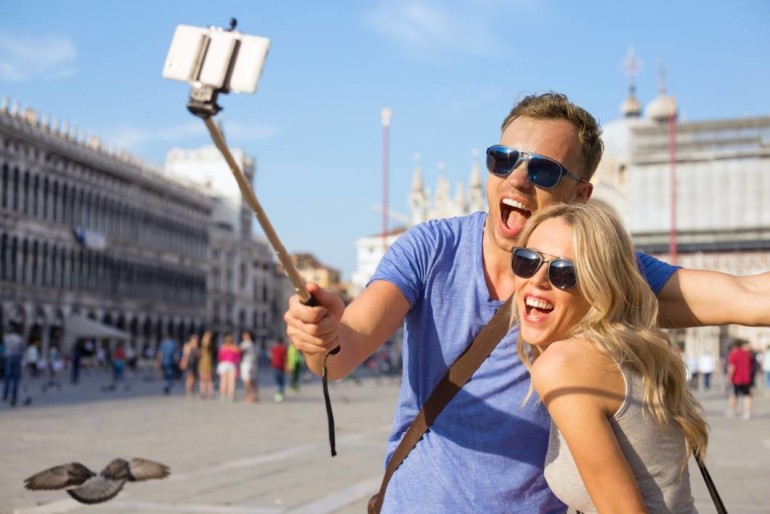Sponsored Listings:
In the past decade, many things have changed in tourism. Before hotels and B&Bs were your only option when planning a trip, taking incredible photos in breathtaking destinations was not an actual job, and even tourists were viewed as ‘undesirable’ in certain places. So, given the numerous but amazing transformations that tourism has experienced, let’s take a look at things that did not exist but emerged in tourism 10 years ago.
Airbnb
Nowadays you can get in touch with people of almost any destination to rent their properties directly, with a number of warranties and following a fairly simple process. Even though there are now several similar platforms, Airbnb was a pioneer in the collaborative economy system of lodging and accommodations.
The company was born in 2008, but it took a couple of years to take off worldwide. Currently, there are over 7 million accommodations, distributed across 191 countries and 100,000 cities. The company is valued at US$31 billion, even above Hilton Hotels, which according to Wired is valued at US$25 billion.
Still, Airbnb has had to face restrictions of governments throughout the decade for issues such as tax collection, mass tourism, and gentrification.
Travel influencers

Ten years ago, few could have imagined that traveling the world and documenting it could be a real job – and quite a profitable one. In 2009, Instagram didn’t even exist.
According to a study by Hopper, one travel-related Instagram post by Brazilian influencer Caio Castro costs US$138,000. In the so-called Instagram Rich List 2019, Castro is followed by Briton Paul Nicklen, who can charge up to US$43,600 per post.
Using the online tool of Influencer Marketing Hub reveals that if you had 20,000 views a day on YouTube, your monthly earnings would be between $855 and $1,425.
Overtourism
10 years ago, the terms “tourismphobia” or “overtourism” weren’t heard of. According to the World Tourism Organization, such concepts reflect the challenges of maintaining a growing number of travelers in a particular destination. Among the difficulties is the use of natural resources, socio-cultural impact, excessive service offer and lack of infrastructure. That is why more and more places have restrictions for tourists.
This year alone, the island of Santorini, in Greece, established a limit of 8,000 visitors a day; and the Taj Mahal limited the time allowed for each tourist to stay. In addition, the world-famous Maya Bay, location of the film “The Beach”, will remain closed until 2021 to favor the recovery of reefs. Other destinations going through tourismphobia are Venice and Barcelona.
Augmented reality

This technology is capable of bringing digital elements into the real world through a screen or device. A perfect example of this is the Pokémon Go game, although the possibilities are much greater.
Thanks to augmented reality, an app can visually locate good restaurants, hotels or tourist attractions. For example, Bus Times London allows you to find bus stops in London. eTips, has created guides using this technology for countries such as Germany or Italy. The Google Lens translator also uses augmented reality.
Robots
Even though it is not yet a technology found worldwide, we cannot deny that it is getting stronger in the tourism industry in recent years, especially in aviation. Airports such as Istanbul, Munich, Schiphol (Amsterdam) or Changi (Singapore) use them to give directions to lost passengers, update them on flights, or even patrol.
In Japan, the Henn na Hotel gained fame after becoming the first robot-staffed hotel. It is quite a bizarre experience being greeted in the lobby by a velociraptor. This year, the hotel fired many of its robot “employees” due to guest complaints.
Robots can even be found on cruises. After Quantum of the Seas, which sailed in 2014, several ships of the Royal Caribbean company also feature the Bionic Bar, a bar boasting robot bartenders that prepare cocktails for passengers.
Local experiences
Over the last 5 years, the idea of getting more involved with a destination has expanded as opposed to following a list of must-see attractions or just partake in ‘traditional tourism’. This trend consists of finding tours offered by locals, doing activities related to the culture of the destination, or venturing into the little known neighborhoods of a city.
We not only refer to the experiences that Airbnb has been offering for 3 years but also to various companies with a similar concept. Among them is Tours by Locals, Eat With, Context Travel or Global Greeter Network.

Selfie sticks
The boom of selfie sticks started in 2014, and now it seems to be an essential invention in our lives, whether you love it or hate it. However, this handy item for travelers has also been banned from tourist sites for security or preservation reasons. On the list are museums, national parks, theme parks, and historical attractions, just to name a few.
The case of drones is very similar. Not only can they be prohibited in tourist attractions, but entire countries as well, like Cuba or Kenya for example.
Source: tourism-review.com










